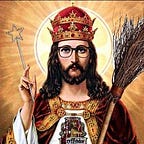Religion in Humans of New York
Humans of New York is a well-known blog and book created by Brandon Stanton. Brandon began this project in the summer of 2010, and has since expanded it to other forms of social media such as Facebook and Instagram. The Humans of New York Facebook page has almost 16 million followers, while the Instagram account as 4 million followers.
Brandon began Humans of New York with the intention of photographing New York residents. However, because popular culture is highly influenced by consumer market demands (Klassen, 19), the blog, book and Facebook page grew and turned into a much larger medium for people to share their life experiences.
Brandon photographs and interviews both children and adults, allowing them to share stories about anything, including religion. Theorist Raymond Williams helps describe what Humans of New York is: a culture that includes the experiences and everyday lives of ordinary people (Klassen, 20). Williams further explains that for him, “culture was a way of life in which meanings and values were expressed through the various cultural products created and consumed.”(Klassen, 21). Going off of what Williams believes is culture, it is important to note that Brandon has created a cultural product, his blog, which is constantly being consumed. His blog, book and Facebook page allow people to express their feelings and values through personal interviews with him but also through Facebook comments. Humans of New York is an example of what both Klassen and Forbes refer to as ‘religion in popular culture.’ Brandon’s blog and Facebook page reflects individuals’ understandings and experiences with religion. In both the blog and Facebook posts as well as the comments under the photographs, religion and religious themes are often referenced (Klassen, 22).
Although a post by Humans of New York focuses on one person, it always resonates with countless people around the world. It is a very important and eye-opening blog that as stated by David Chidester, is a form of popular culture that should not be considered superficial seeing as it involves serious issues and higher meanings, such as religion (Klassen, 22).
Brandon took Humans of New York even further by taking it overseas to Iran and Greece. Following the same concept, he photographed and interviewed citizens in Iran and in Greece he shared the stories of refugees. While Brandon’s usual subjects in New York share real life events concerning religion, those interviewed in Iran and Greece bring forth new experiences and perspectives regarding religion.
As discussed by Rubina Ramji, many movies, television shows and newspapers create a perception about certain religions, such as Islam (Ramji, 6). Humans of New York takes on a completely different approach. Nothing is fabricated, and everything discussed about religion arises from people from all over the world. Through Humans of New York, Brandon helps eliminate the perception many had about refugees. The heartbreaking stories about the refugee crisis reached us all the way in Canada and certainly impacted many. The posts reached millions of likes and shares on Facebook.
Not only does Humans of New York share stories and events about religion, but it can also be argued that the blog is a form of popular culture as religion. While this argument is debatable, Brandon’s blog and Facebook page can behave as an implicit religion. Many followers of Humans of New York are committed to reading, liking and sharing photos and stories. While the blog may not be something to live and die for, it is something that constitutes intensive interest and perhaps even extensive effects in people’s lives. Many feel very empathic and touched by Humans of New York stories. Others have taken physical action towards helping others who have been featured on the blog. Through Humans of New York, Brandon has created a community: a community with religious themes, values, with religious believers and non-believers. And whether one already belongs to a religion or is not religious at all, the blog and Facebook page remains a community of people that share a common interest and devotion.
Bibliography
Klassen, Chris. “Religion and Popular Culture.” In Religion and Popular Culture: A Cultural Studies Approach, 7–28. Don Mills: Oxford University Press, 2014.
Forbes, Bruce David. “Introduction: Finding Religion in Unexpected Places.” In Religion and Popular Culture in America. Ed. B. D. Forbes and Jeffrey H. Mahan, 1–20. Berkeley: University of California Press, 2000.
Ramji, Rubina. “Representations of Islam in American News and Film: Becoming the ‘Other’.” In Mediating Religion: Conversations in Media, Religion, and Culture. Ed. Jolyon Mitchell and Sophia Marriage, 65–72. London: T&T Clark, 2003.
Stanton, Brandon. Humans of New York. Web. 20 Oct. 2015.
